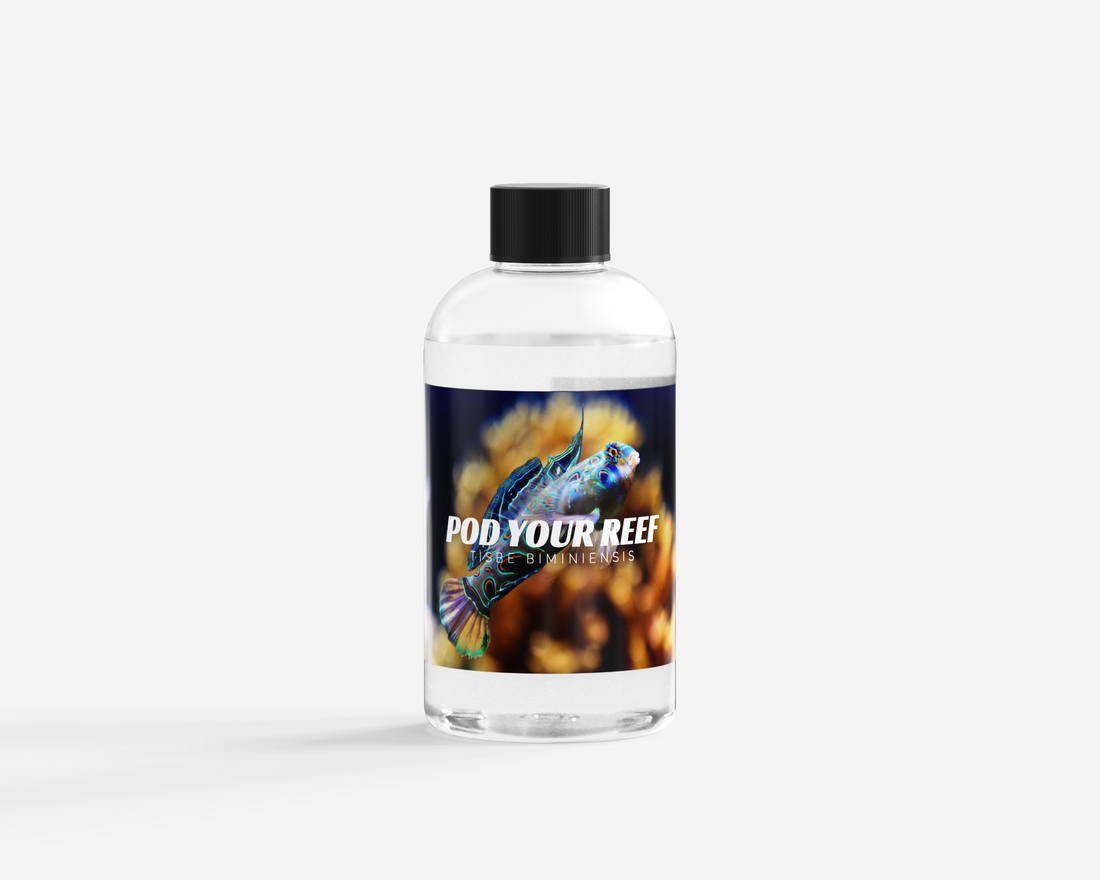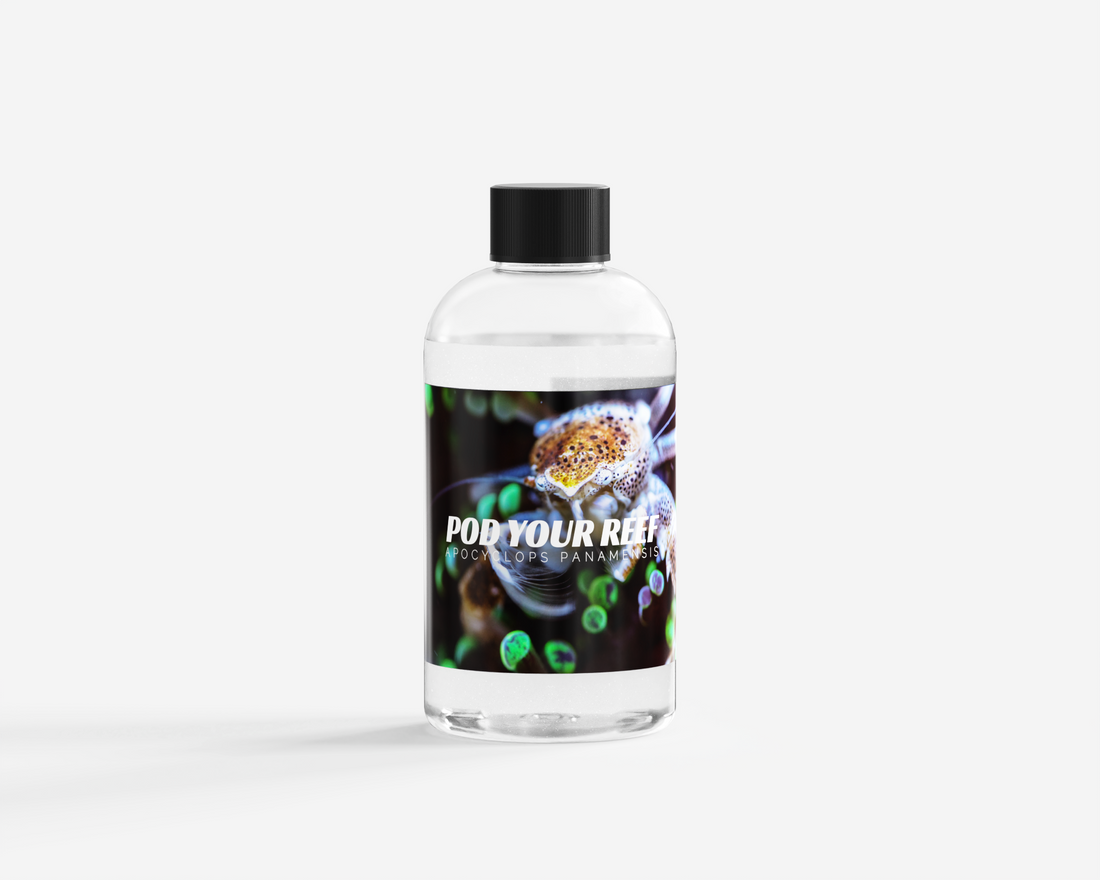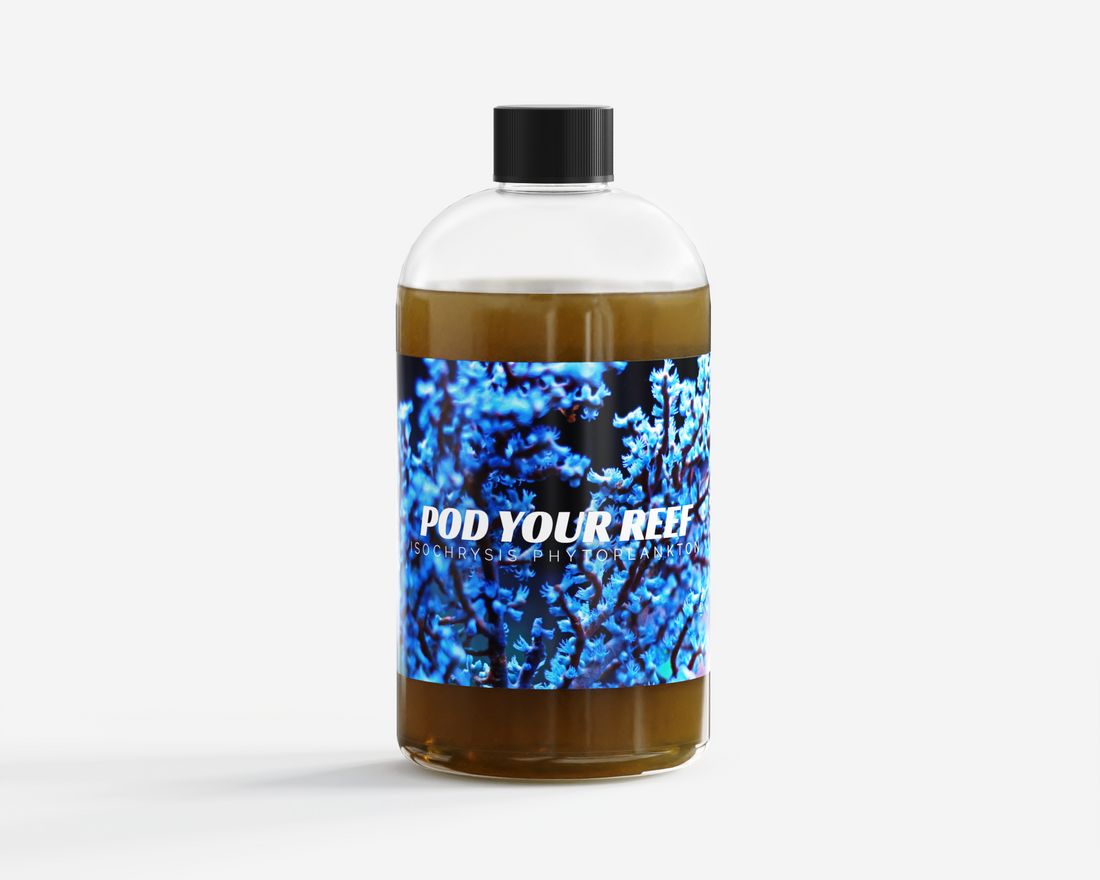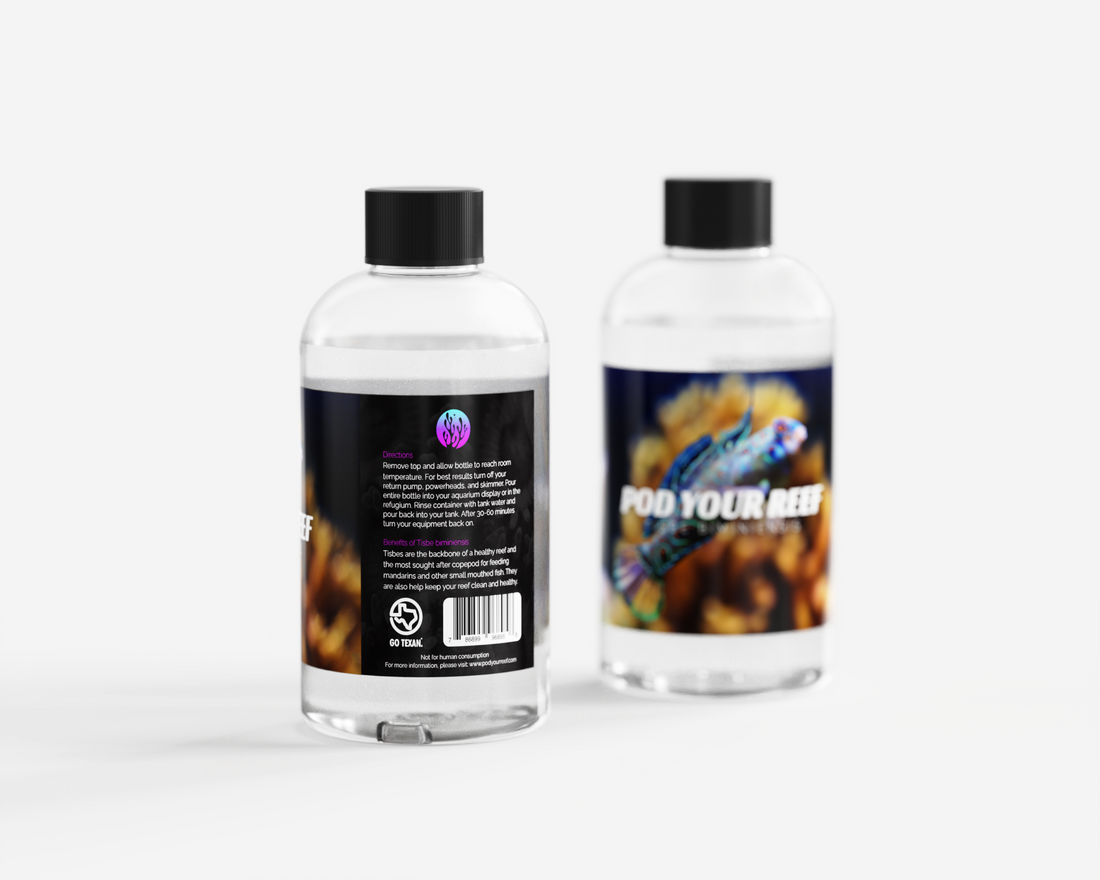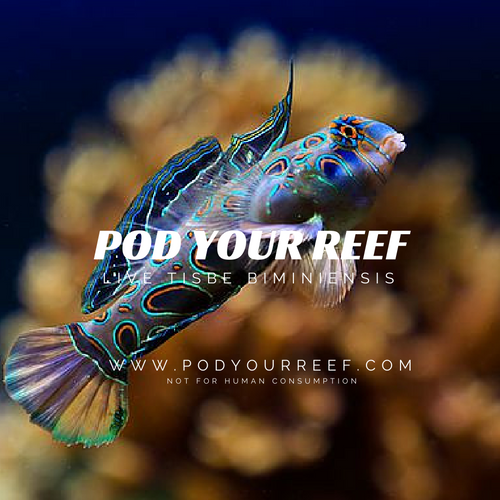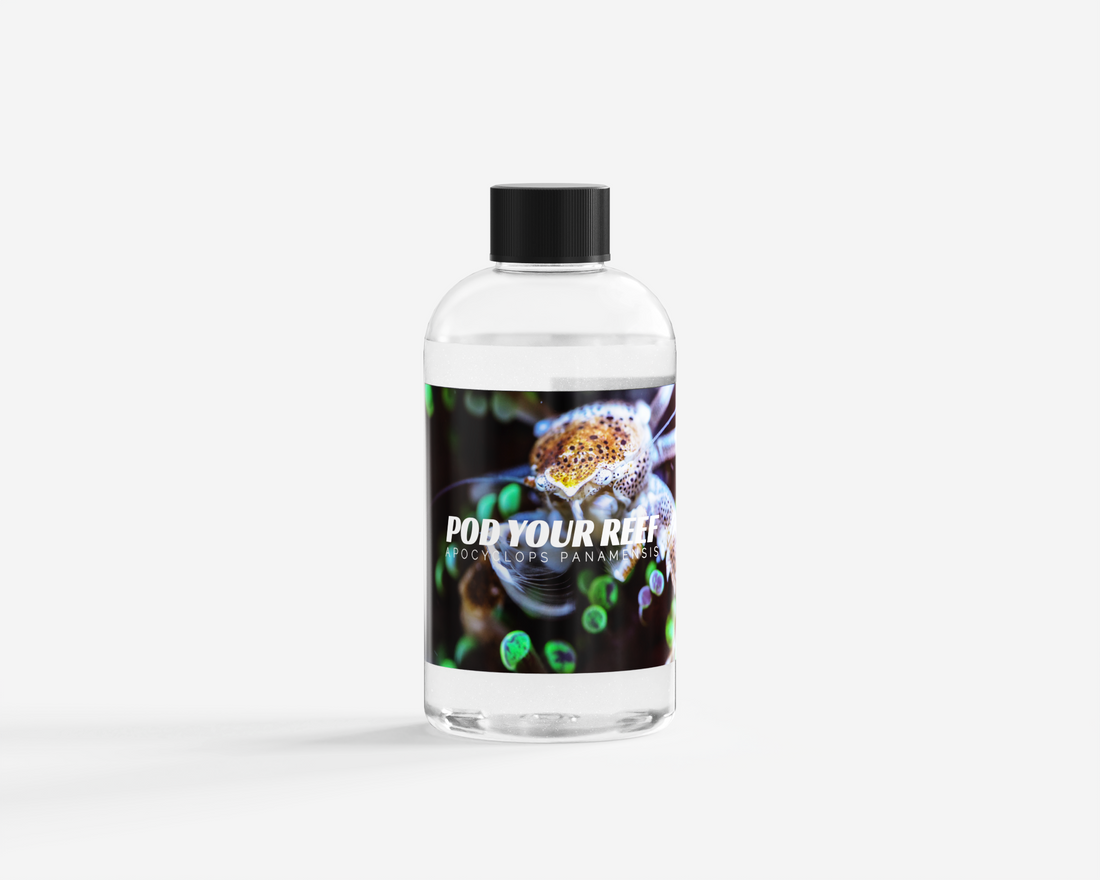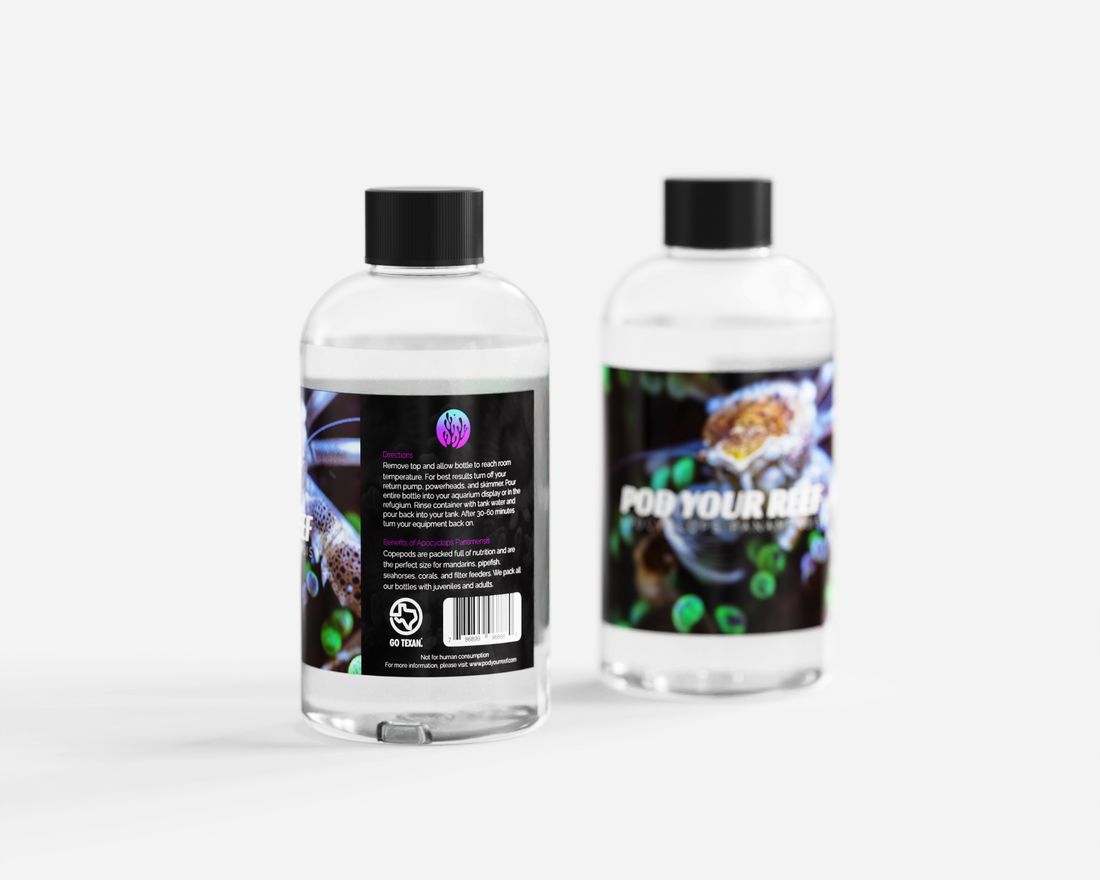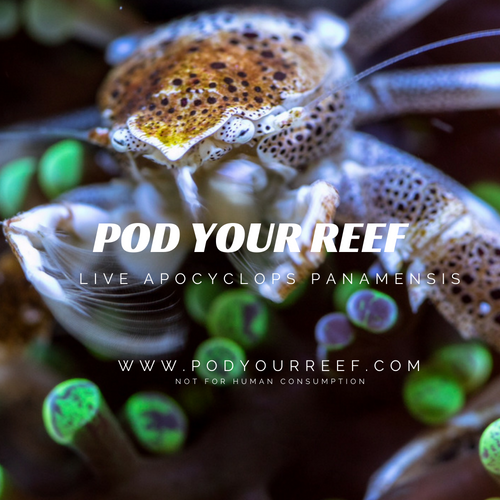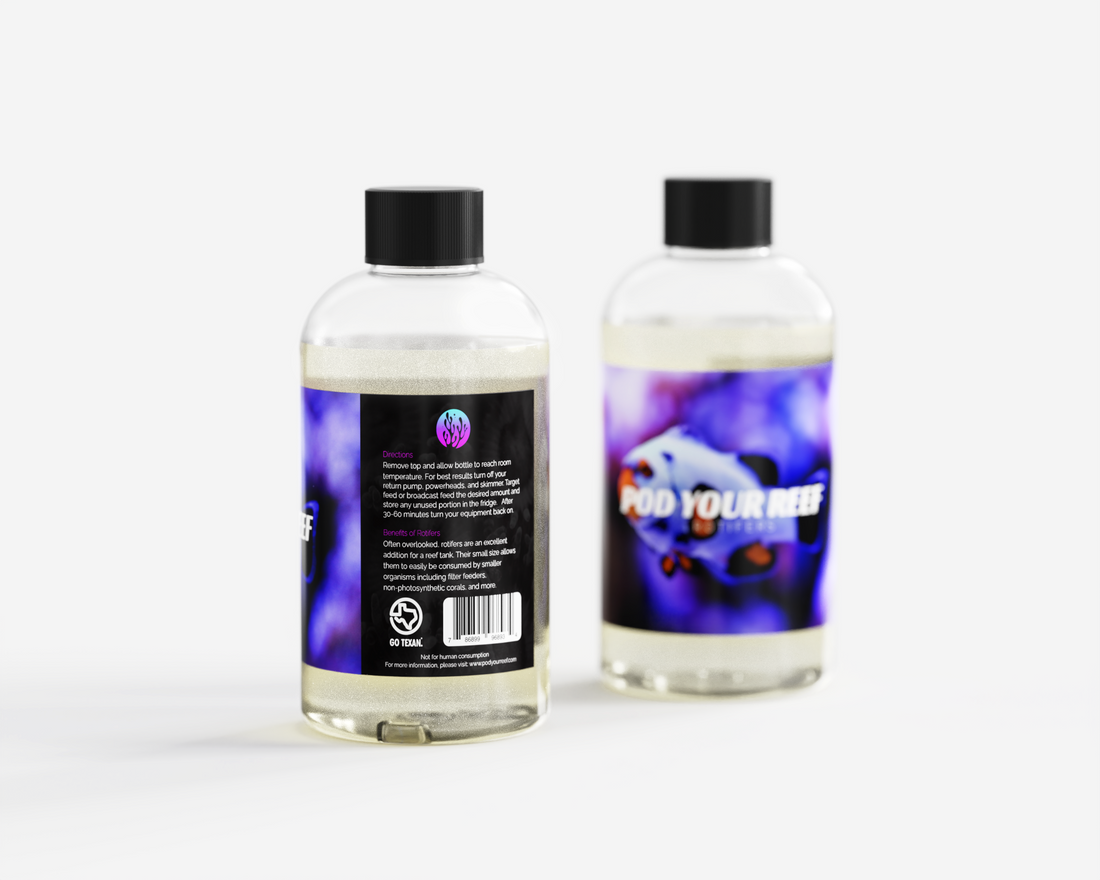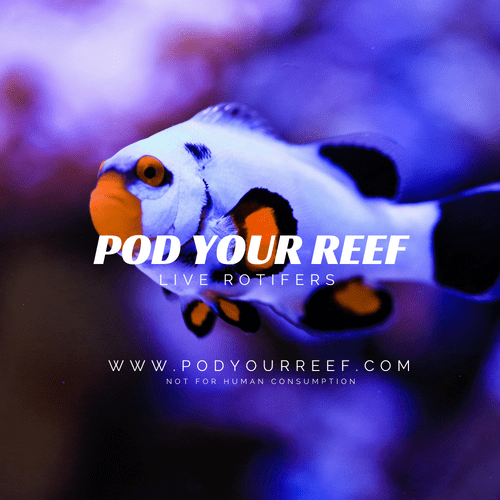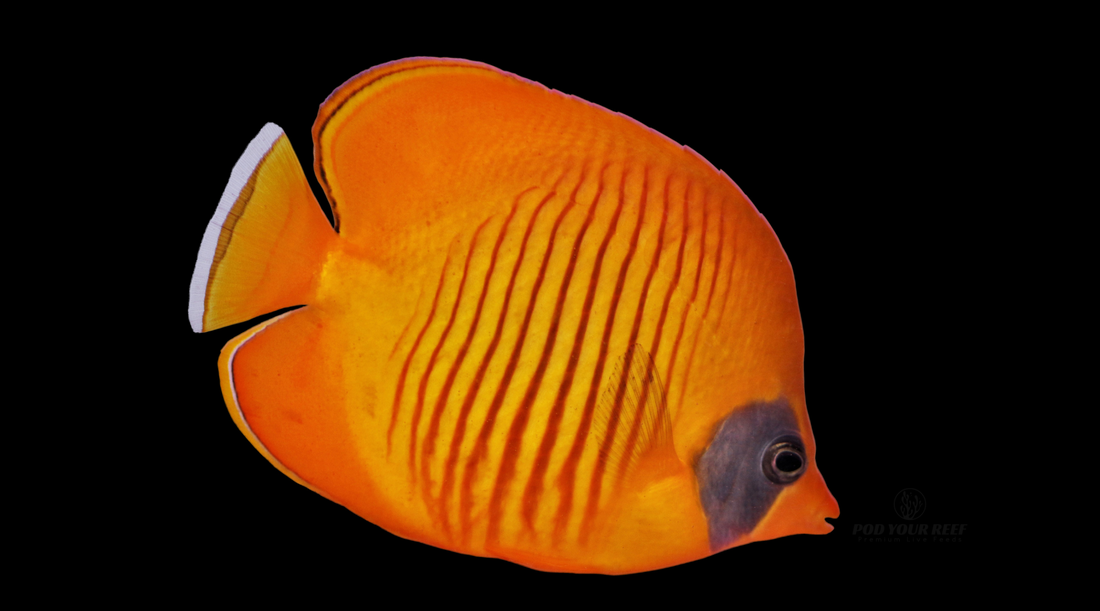
Care
The Marine Butterfly Effect: Coping & Caring for the Chaetodontidae
The Marine Butterfly Effect: Coping & Caring for the Chaetodontidae
The Marine Butterfly Effect: Coping & Caring for the Chaetodontidae
The Chaetodontidae comprises the Marine Butterflyfish and Bannerfish, a family radiating fromthe Indo-Pacific but which has succeeded in occupying nearly every tropical sea. The Chaetodontidae take rank with other ‘classic reef’ fish families such as the Surgeonfish (Acanthuridae), the Rabbitfish (Siganidae) and the Marine Angelfish (Pomacathidae). This is due to their larger size, bold swimming patterns, and charismatic colorations. As a result, there are few members of the Chaetodontidae that are not desired and coveted by every reef aquarist that beholds them. However, the unique biology of the various marine butterflyfish make them more or less challenging aquarium fish for beginners and reef veterans alike. Many species can grow over 10’’ in length and require 200+ gallon aquariums to be housed properly. Catering to the particular and ravenous hungers of the Chaetodontidae is another major husbandry hurdle. Charismatic species such as the Chevron Butterflyfish (Chaetodon trifascialis), the Melon Butterflyfish (Chaetodon trifasciatus) and the Blacktail Butterflyfish (Chaetodon austriacus) specialize in eating Acropora, Porites, Pocillipora, Montipora, Lobophyllia, Favites and other valuable SPS corals—making them quite unsuitable for reef aquariums. Most generally prized are the smallest species of marine butterflyfish such as the Copperband Butterflyfish (Chelmon rostratus), Atlantic Butterflyfish (Chaetodon sedentarius), Mertens Butterflyfish (Chaetodon mertensii), Longnose Butterflyfish (Forcipiger longirostris), Yellow Longnose Butterflyfish(Forcipiger flavissimus), Pyramid Butterflyfish (Hemitaurichthys polylepis), Peppered Butterflyfish (Chaetodon guttatissimus) and the Milletseed Butterflyfish (Chaetodon miliaris).These species are reef-safe and are beautiful…but they have a ravenous hunger for rotifers, amphipods, small shrimps and copepods. For much of the early days of the reef aquarium hobby, few had success keeping copperband butterflies. Today, many species of marine butterflyfish are not only successfully being kept, but a few key species have even become sustainably aquacultured! The key to this rising success is the embrace of high-quality Live Feeds enriched with Golden Fats!

A Fish Designed to Ravenously Graze
“Scleractinian corals are the most important food resource for the Japanese butterflyfishes, and next important are sea anemones, sedentary polychaetes, alcyonarians, and algae.” (Sano 1989) Chaetodontids spend the broad majority of their lives grazing: always searching for that ideal forage. Bonaldo et al 2005 documented that the Banded Butterflyfish (Chaetodon striatus) spent on average 11 hours and 30 minutes scouring the soft bottom of the Western Atlantic for anthozoans, polychaete worms, small crustaceans and mollusk eggs. They have relatively fast metabolisms (especially the zooplanktivores) and are designed to constantly be intaking high-quality forage. This should be kept in mind when considering the size of the aquarium to house any particular marine butterflyfish species and the number of grazing opportunities required to satiate it. The Chaetodontidae are united in that they are mega-grazers, constantly in search of continuous forage. In this regard, they have diverged into a tremendously diverse array of specialized feeding strategies. These diverse feeding specializations have been generalized into the following: hard-coral-feeders, soft-coral-feeders, rubble grazers, soft-bottom grazers, sponge-feeders and the pelagic zooplankton feeders. Each of these general groups contain a spectrum of specialists and generalists–but even these terms fail to capture the nuance exhibited by many chaetodontid species. For example, the Spotfin Butterflyfish (Chaetodon ocellatus) has a natural diet that is over 60% polychaete worm tentacles. Species such as the Schooling Bannerfish (Heniochus diphreutes), the Bluebotch Butterflyfish (Chaetodon plebeius) and the Easter Island Butterflyfish (Cheatodon litus) are specialized coral/sponge feeders as adults, yet exhibit novel ‘cleaning’ behaviors as juveniles where they consume ectoparasites off other reef fish. Though many species of marine butterflyfish show extreme preference for particular coral species, they can display an amazing degree of dietary and behavioral plasticity when ‘desperate’. For example, Melon Butterflyfish prefer Acropora almost exclusively, but when that coral’s density is low, they will consume a variety of previously ‘undesirable’ coral species. Maldanado et al 2019 postulated that various marine butterflyfish species can produce detoxification enzymes in order to compensate for unideal forage. The Eight-Banded Butterflyfish (Chaetodon octofasciatus) predominantly feeds on Acropora but displays a strong preference for Fungia corals when grazing at deeper depths. The Blacktail Butterflyfish (Chaetedon austriacus) prefers Montipora, Porites and Pocillopora yet will avoid Lobophyllia and Favites corals. Normally a benthic feeder, the Banded Butterflyfish (Chaetodon striatus) has been observed eating Chrysaora lactea jellyfish when conventional forage is scarce. Bertucci et al 2016 observed the Threadfin Butterflyfish (Chaetodon auriga), the Speckled Butterflyfish (Chaetodon citrinellus), the Saddle Butterflyfish (Chaetodon ephippium), the Oval Butterflyfish (Chaetodon lunulatus), the Chevron Butterflyfish (Chaetodon trifascialis) and the Pacific Double-Saddle Butterflyfish (Chaetodon utiliensis) aggregaterating around French Polynesian pearl oyster (Pectinacta margaritifera) farms to feast on the various biofouling organisms which grow on the aquaculture gear. This adaptive feeding plasticity offers new hope and clues for what nutrition is actually needed for these species.
Grazing Towards a More Stable Reef Architecture
The Family Chaetodontidae enjoyed an explosion of success in the early Miocene as it radiated in diversity along with the coral reefs it colonized. The result was an incredible amount of divergent evolution in terms of specialized jaw structures and gastrointestinal anatomy. All this means that each marine butterflyfish species is intimately connected to the forage it has evolved to graze upon, whether that be a stony coral, a soft sponge, a stinging anemone, a small cardenoid shrimp, a wafting rotifer or a pepping copepod. The mass grazing of marine butterflyfish regulates growth and community composition of wild coral reefs. They keep fast growing coral species from dominating over all others, but they also play an essential role in the distribution of those coral’s microbes. Reverter et al 2017 observed that various marine butterflyfish species were actively recruiting the microbes associated with their coral forage…and that these microbes operate a functional role within the fish, while being spread to new corals during subsequent grazing.
“Our results indicate that different fish species present specific bacterial assemblages. Finally, as mucus layers are nutrient hotspots for heterotrophic bacteria living in oligotrophic environments, such as coral reef waters, the high bacterial diversity found in butterflyfish gill mucus might indicate external fish mucus surfaces act as a reservoir of coral reefbacterial diversity.” (Reverter et al 2017)
This implies that marine butterflyfish are intimately dependent on their diet for recruitment of essential microbes. This is reinforced by the failure of various chaetodontid species to adapt well to conventional aquarium feeds, which are largely sterile. In the wild, marine butterflyfish will alter their diet greatly when coral reefs are distrubed and their preferred forage is scarce. This change in diet comes at a cost, where the fish may not grow as large, live as long, be as colorful or be more susceptible to disease. The imbalances reflected in wild maine butterflyfish adapting to significant reef disruptions, provides clues as to avoid such malnutrition in captive individuals.
“the gut microbiome of a facultative, coral-feeding butterflyfish (Chaetodon capistratus) is significantly more variable among individuals at degraded reefs with very low live coral cover (~0%) than reefs with higher coral cover (~30%), mirroring a known pattern of microbial imbalance observed in immunodeficient humans and other stressed or diseased animals. We demonstrate that fish gut microbiomes on severely degraded reefs have a lower abundance of Endozoicomonas and a higher diversity of anaerobic fermentative bacteria, which suggests a broader and less coral dominated diet.” (Clever et al 2020)
Diseases of the Chaetodontidae
“The structure of the monogenean communities of butterflyfishes suggests that the diversity and complexity of community structures arises from a combination of host species-specific parameters.” (Reveter et al 2016)
The incredible morphological diversity amongst the marine butterflyfish has given way to an equally rich diversity of parasites. Those who purchase/keep marine butterflyfish must not only fare with the usual aquarium protozoan/dinoflagellate scourges such as marine ich (Cryptocaryon irritans) and Marine Velvet (Amyloodinium ocellatum), but they must also be on the watch for iridoviruses (Lymphocystis) as well as specialized parasites such as monogenean gill trematodes (Gyrodactylus sp.). Some of these parasites can be genus or even species-specific, which can make for some unique/frustrating troubleshooting when introducing wild-caught specimens into a tank. Because of their frequent suitability to disease in aquariums, there is much interest in developing novel treatment strategies for valuable Chaetodontid species.
Breakthroughs in developing potent treatments can be inspired from observing the natural defense capabilities of wild marine butterflyfish. The Oval Butterflyfish houses a unique community of Fusobacteriaceae within its gill muscus which are attributed to its resistance against monogenean trematode infestation.
Social Structure & Territoriality
Chaetodontidae are counterintuitively social fish. Nuanced social hierarchies are vital for regulating the forage activity on a reef. Overgrazing is largely self-regulated by Chaetondids through establishment of grazing territory. Marine Butterflyfish will actively defend the patch of coral or rockwork which they graze from members of their own species or any other seeking similar forage.Though it must be appreciated that dozens of species have been observed co-mingling over singular reef flats with no apparent effort to partition forage. This is because coral composition/forage access greatly determines the social behavior of marine butterflyfish from birth. Prey density greatly affects grazing behavior.This has direct repercussions on the social arrangements between chaetodontid species and individuals. Juveniles of the Eastern Triangular Butterflyfish (Chaetodon baronessa) are far more aggressive and form less social groups when prey is abundant. When it is scarce, they occupy much larger grazing territories and tolerate the presence of their own kind. It has become apparent that diet directly guides the social assemblage of marine butterflyfish. What remains ever-elusive are the particularities which link microbial acquisition and reef-altering behavior ‘choices’.Courtship is a fascinating aspect of chaetontid biology. The Pyramid Butterflyfish (Hemitaurichthys polylepis) buckles its swim bladder to produce acoustic pulses at dusk to attract mates. Monogamous pair bonding is not an uncommon occurrence among the marine butterflyfish, with stable pairs often assisting each other in the preservation or territory, sometimes resulting in the reduction of conflict with intruders all together. Naturally, pair bonding is associated with sites of optimum forage where periodic spawning can occur.
“Sexual dimorphism identification [of Copperband Butterfly] was studied by snout morphology comparison of both sexes. The results showed that the morphology of snout of male and female were different. The snout of male occupied a small hump of 1-2 mm height protrusion and higher slope than the female. Number of spawning was 7 times.” (Ruensirikul 2016)
Copepods Facilitate Breakthroughs in Chaetodontidae Aquaculture!
“Larvae were stocked into 128-L, cylindrical, rearing tanks at 15–20 larvae/L and fed nauplii of the copepod, Parvocalanus crassirostris, and the microalgae, Tisochrysis lutea, was added to green the water…Spawning occurred in broodstock tanks between one dominant male and a single female with a large, swollen abdomen. Eggs of the Milletseed Butterflyfish were small, spherical, pelagic, and transparent and hatched after a 28-h period at 25.5°C. Newly hatched larvae had unpigmented eyes and a closed digestive tract and measured 1.20– 1.24 mm in notochord length. Larvae were capable of feeding at 4 d posthatch (dph), fully absorbed the yolk sac by 7 dph, and began forming the tholichthys plates at 24 dph. Larvae survived to 44 dph in preliminary culture trials and measured 6.49–6.56 mm TL. Further investigation into the culture requirements of Milletseed Butterflyfish will supply a crucial base for developing aquaculture protocols for other marine ornamental species.” (Degidio et al 2017)
There are many reasons why very few marine butterflyfish species in the reef aquarium hobby are aquacultured. It is difficult enough to house the larger species at adult size, let alone to the condition of breeding. The smaller species that can be reasonably housed in home aquaria must be exquisitely comfortable and well fed in order to exhibit pair bonding and shared territoriality. Spawning is also sporadic and season-long in many species, making it difficult to predict/induce. Furthermore, the eggs of marine butterflyfish are pelagic and highly fragile–requiring specialized equipment/techniques to collect and incubate. Newly-hatched marine butterfly larvae are minimally component and receive relatively little yolk supplies. This makes their first feed all the more essential as it must not only deliver the Golden Fats (ARA/EPA/DHA) needed to further develop the larval; but it must also include an inoculating dose of probiotics, prebiotics and proenzymes so that further meals can be digested. Degidio et al 2017 through the Rising Tide Foundation made a great advancement for chaetotonid aquaculture by successfully rearing the larvae of the Milletseed Butterflyfish (Chaetodon miliaris). The key to their success was providing newly hatched C. miliaris larvae the nauplii of the pelagic calanoid copepod Parvocalanus crassirostris. This hints at the essential connection shared between this species and copepods from birth all through adulthood.
“C. miliaris larvae had the highest first feeding response, measured by the proportion of larvae feeding and feeding intensity per larvae, with the prey item P. crassirostris nauplii in green water and prey densities between 1 and 15 nauplii/ml.” (Degidio et al 2018)
Advice for Keeping Reef-Safe Marine Butterflies!
Diet and Tank Size are the two most important considerations when adding chaetodontids to an aquarium. The broad majority of marine butterflyfish species are unsuitable for home aquariums because they are too large and too aggressive for aquariums under 300 gallons. Furthermore, many species are ravenous coral grazers and can reduce an expensive SPS collection to rubble in a matter of days to weeks. Anemone-feeding species such as the Racoon Butterflyfish (Chaetodon lunula) would be ideal biocontrol for pests like Aptaisa, if they would not consume everything else in the process… That being said, there are a variety of ‘reef-safe’ marine butterflyfish species such as the hallmark Copperband Butterfly (Chelmon rostratus). Such species will not consume corals but still require larger aquariums in order to have plenty of grazing territory. Copperband Butterflyfish can be kept in smaller aquariums (50-100 gallons) provided that they are supplemented with a surplus of premium live feeds. Aquacultured cyclopoid and harpacticoid copepod species such as Apocyclops panamensis, Tisbe biminiensis and Tigriopus californicus are ideal for seeding reef tanks or as a direct feed! These copepod species are the ideal size and shape for the small-mouthed copperband. These copepods are devoid of any spines or hard protrusions and they swim/‘pep’ in an appealing manner. Furthermore, they are rich in the proenzymes, prebiotics, probiotics, proteins, lipids, cholesterols, vitamins and carotenoids needed to support the complex dietary needs of Chelmon rostratus and other zooplanktivorous marine butterflyfish species. Copepod populations can be boosted by the dosing of Live Golden Fat Microalgae (Isochrysis galbana, Rhodomonas sp.) into the aquarium. These microalgae are not only the ideal pod feed, but they significantly enhance the nutritional profile of all which consumes them. Copepod populations can also be greatly intensified through the establishment of a Refugium into the reef aquarium. This provides a shelter where copepods, amphipods, polychaete worms, micro-brittle stars and other ideal forage can accumulate and be gradually dosed into the display aquarium…and the waiting jaws of a copperband. Refugiums function at a completely different level when fostering a robust garden of Sea Veggies (Ulva lactuca, Chaetomorpha linum, Gracilaria hayi, Halymenia durvillei etc.). These seaweeds provide structure and food for copepods and other forageable inverts. They also super-oxygenate the refugium’s substrate, accelerating copepod reproduction. Providing a diet rich in Golden Fats (ARA/EPA/DHA) and carotenoids is an excellent way of promoting robust growth and coloration in a marine butterflyfish.Conclusions on Chaetodontidae
The Chaetodontidae remain one of the most prized fish families in the modern aquarium industry. Many species are inherently challenging to keep in captivity, yet provide a captivating challenge. Their behavior in the wild inspires aquarium hobbyists and formal biologists alike in how intimately linked reefs are to the fish which graze upon them. This connection, on a microbial level, guides us towards the recognition of just how essential diet is to a reef fish. Diet is not one formulated, inert composition of proteins, lipids, carbs and binders—it is an intimate relationship between the grazer and the grazed. It is in the seeding of copepods and the creation of refugiums that the conscientious aquarist builds a microworld of forage to support the marine butterflyfish in their care. By no other means, will one have consistent success with this incredibly beautiful and powerful fish family.
Literature Consulted
Alwany, M., Thaler, E., & Stachowitsch, M. (2003). Food selection in two corallivorous butterflyfishes, Chaetodon austriacus and C. trifascialis, in the northern Red Sea. Marine Ecology, 24(3), 165-177.
Bertucci, F., Legraverant, Y., Berthe, C., Brooker, R. M., Lo, C., & Lecchini, D. (2016). Natural cleaning of the black-lip pearl oyster Pinctada margaritifera by butterflyfishes (Chaetodon) inFrench Polynesia. Estuarine, Coastal and Shelf Science, 182, 270-273.
Berumen, M. (2001). Diet and territory size of butterflyfish in habitats with varying coral cover and composition. Inquiry: The University of Arkansas Undergraduate Research Journal, 2(1),13.
Berumen, M. L., Pratchett, M. S., & McCormick, M. I. (2005). Within-reef differences in diet and body condition of coral-feeding butterflyfishes (Chaetodontidae). Marine Ecology Progress Series, 287, 217-227.
Berumen, M. L. (2005). The importance of juveniles in modelling growth: butterflyfish at Lizard Island. Environmental Biology of Fishes, 72(4), 409-413.
Bonaldo, R. M., Krajewski, J. P., & Sazima, I. (2005). Meals for two: foraging activity of the butterflyfish Chaetodon striatus (Perciformes) in southeast Brazil. Brazilian Journal of Biology, 65, 211-215.
Boyle, K. S., & Tricas, T. C. (2010). Pulse sound generation, anterior swim bladder buckling and associated muscle activity in the pyramid butterflyfish, Hemitaurichthys polylepis. Journal of experimental biology, 213(22), 3881-3893.
Chaves, L. C. T., Feitosa, J. L. L., & Pereira, P. H. C. (2010). First record of predation on jellyfish by butterflyfish on Brazilian rocky reefs. Marine Biodiversity Records, 3.
Clever, F., Sourisse, J. M., Preziosi, R. F., Eisen, J. A., Guerra, E. C. R., Scott, J. J., ... & Leray, M. (2020). The gut microbiome stability of a butterflyfish is disrupted on severely degraded Caribbean coral reefs. bioRxiv.
Cole, A. J., & Pratchett, M. S. (2014). Diversity in diet and feeding behaviour of butterflyfishes: reliance on reef corals versus reef habitats. Biology of butterflyfishes, 107-139.
Cole, A. J., Lawton, R. J., Pratchett, M. S., & Wilson, S. K. (2011). Chronic coral consumption by butterflyfishes. Coral Reefs, 30(1), 85-93.
Cox, E. F. (1994). Resource use by corallivorous butterflyfishes (Family Chaetodontidae) in Hawaii. Bulletin of Marine Science, 54(2), 535-545.
Crosby, M. P., Reese, E. S., & Berumen, M. L. (2013). Corallivorous butterflyfishes as ambassadors of coral reefs. Biol Butterflyfish, 247-68.
Degidio, J. M. L., Yanong, R. P., Watson, C. A., Ohs, C. L., Cassiano, E. J., & Barden, K. (2017). Spawning, embryology, and larval development of the milletseed butterflyfish Chaetodon miliaris in the laboratory. North American Journal of Aquaculture, 79(3), 205-215.
Degidio, J. M. L., Yanong, R. P., Ohs, C. L., Watson, C. A., Cassiano, E. J., & Barden, K. (2018). First feeding parameters of the milletseed butterflyfish Chaetodon miliaris. Aquaculture Research, 49(2), 1087-1094.
Feary, D. A., Bauman, A. G., Guest, J., & Hoey, A. S. (2018). Trophic plasticity in an obligate corallivorous butterflyfish. Marine Ecology Progress Series, 605, 165-171.
Ferry-Graham, L. A., Wainwright, P. C., & Bellwood, D. R. (2001). Prey capture in long-jawed butterflyfishes (Chaetodontidae): the functional basis of novel feeding habits. Journal of Experimental Marine Biology and Ecology, 256(2), 167-184.
Findley, J. S., & Findley, M. T. (1985). A search for pattern in butterfly fish communities. The American Naturalist, 126(6), 800-816.
FRICKE, H. W. (1986). Pair swimming and mutual partner guarding in monogamous butterflyfish (Pisces, Chaetodontidae): a joint advertisement for territory. Ethology, 73(4), 307-333.
Graham, N. A. J., Wilson, S. K., Pratchett, M. S., Polunin, N. V., & Spalding, M. D. (2009).
Coral mortality versus structural collapse as drivers of corallivorous butterflyfish decline. Biodiversity and Conservation, 18(12), 3325-3336.
Gregson, M. A., Pratchett, M. S., Berumen, M. L., & Goodman, B. A. (2008). Relationships between butterflyfish (Chaetodontidae) feeding rates and coral consumption on the Great Barrier Reef. Coral Reefs, 27(3), 583-591.
Harmelin-Vivien, M. L. (1989). Implications of feeding specialization on the recruitment processes and community structure of butterflyfishes. In The butterflyfishes: success on the coral reef (pp. 101-110). Springer, Dordrecht.
Hodge, J. R., Alim, C., Bertrand, N. G., Lee, W., Price, S. A., Tran, B., & Wainwright, P. C. (2018). Ecology shapes the evolutionary trade‐off between predator avoidance and defence in coral reef butterflyfishes. Ecology letters, 21(7), 1033-1042.
Kelley, J. L., Fitzpatrick, J. L., & Merilaita, S. (2013). Spots and stripes: ecology and colour pattern evolution in butterflyfishes. Proceedings of the Royal Society B: Biological Sciences, 280(1757), 20122730.
Konow, N., Price, S., Abom, R., Bellwood, D., & Wainwright, P. (2017). Decoupled diversification dynamics of feeding morphology following a major functional innovation in marine butterflyfishes. Proceedings of the Royal Society B: Biological Sciences, 284(1860), 20170906.
Lawton, R. J., Cole, A. J., Berumen, M. L., & Pratchett, M. S. (2012). Geographic variation in resource use by specialist versus generalist butterflyfishes. Ecography, 35(6), 566-576.
Lee, I. S., Ohs, C. L., Broach, J. S., DiMaggio, M. A., & Watson, C. A. (2018). Determining live prey preferences of larval ornamental marine fish utilizing fluorescent microspheres. Aquaculture, 490, 125-135.
Liedke, A. M., Barneche, D. R., Ferreira, C. E., Segal, B., Nunes, L. T., Burigo, A. P., ... & Floeter, S. R. (2016). Abundance, diet, foraging and nutritional condition of the banded butterflyfish (Chaetodon striatus) along the western Atlantic. Marine Biology, 163(1), 1-13.
Maldonado, A., Nowicki, J., Pratchett, M. S., & Schlenk, D. (2019). Differences in diet and biotransformation enzymes of coral reef butterflyfishes between Australia and Hawaii. Comparative Biochemistry and Physiology Part C: Toxicology & Pharmacology, 216, 1-9.
Madduppa, H. H., Zamani, N. P., Subhan, B., Aktani, U., & Ferse, S. C. (2014). Feeding behavior and diet of the eight-banded butterflyfish Chaetodon octofasciatus in the Thousand Islands, Indonesia. Environmental biology of fishes, 97(12), 1353-1365.
Morand, S., Cribb, T. H., Kulbicki, M., Rigby, M. C., Chauvet, C., Dufour, V., ... & Sasal, P. (2000). Endoparasite species richness of New Caledonian butterfly fishes: host density and diet matter. Parasitology, 121(1), 65-73.
Motta, P. J. (1988). Functional morphology of the feeding apparatus of ten species of Pacific butterflyfishes (Perciformes, Chaetodontidae): an ecomorphological approach. Environmental Biology of Fishes, 22(1), 39-67.
Motta, P. J. (1989). Dentition patterns among Pacific and Western Atlantic butterflyfishes
(Perciformes, Chaetodontidae): relationship to feeding ecology and evolutionary history. Environmental Biology of Fishes, 25(1), 159-170.
Motta, P. J. (1987). A quantitative analysis of ferric iron in butterflyfish teeth (Chaetodontidae, Perciformes) and the relationship to feeding ecology. Canadian Journal of Zoology, 65(1), 106-112.
Nagelkerken, I., Van der Velde, G., Wartenbergh, S. L. J., Nugues, M. M., & Pratchett, M. S. (2009). Cryptic dietary components reduce dietary overlap among sympatric butterflyfishes (Chaetodontidae). Journal of Fish Biology, 75(6), 1123-1143.
Nanami, A. (2020). Spatial distribution and feeding substrate of butterflyfishes (family Chaetodontidae) on an Okinawan coral reef. PeerJ, 8, e9666.
Nowicki, J. P., O’Connell, L. A., Cowman, P. F., Walker, S. P., Coker, D. J., & Pratchett, M. S. (2018). Variation in social systems within Chaetodon butterflyfishes, with special reference to pair bonding. PloS one, 13(4), e0194465.
Nowicki, J. P., Walker, S. P., Coker, D. J., Hoey, A. S., Nicolet, K. J., & Pratchett, M. S. (2018). Pair bond endurance promotes cooperative food defense and inhibits conflict in coral reef butterflyfish. Scientific reports, 8(1), 1-11.
Pitts, P. A. (1991). Comparative use of food and space by three Bahamian butterflyfishes. Bulletin of Marine Science, 48(3), 749-756.
Pratchett, M. S. (2005). Dietary overlap among coral-feeding butterflyfishes (Chaetodontidae) at Lizard Island, northern Great Barrier Reef. Marine Biology, 148(2), 373-382.
Pratchett, M. S. (2007). Dietary selection by coral-feeding butterflyfishes (Chaetodontidae) on the Great Barrier Reef, Australia. Raffles Bulletin of Zoology, 14(Suppl), 171-176.
Ralston, S. (1981). Aspects of the reproductive biology and feeding ecology ofChaetodon miliaris, a Hawaiian endemic butterflyfish. Environmental Biology of Fishes, 6(2), 167-176.
Reverter, M., Sasal, P., Tapissier-Bontemps, N., Lecchini, D., & Suzuki, M. (2017). Characterisation of the gill mucosal bacterial communities of four butterflyfish species: a reservoir of bacterial diversity in coral reef ecosystems. FEMS Microbiology Ecology, 93(6).
Reverter, M., Cutmore, S. C., Bray, R., Cribb, T. H., & Sasal, P. (2016). Gill monogenean communities (Platyhelminthes, Monogenea, Dactylogyridae) of butterflyfishes from tropical Indo-West Pacific Islands. Parasitology, 143(12), 1580-1591.
Reverter, M., Sasal, P., Suzuki, M. T., Raviglione, D., Inguimbert, N., Pare, A., ... & Tapissier-Bontemps, N. (2020). Insights into the natural defenses of a coral reef fish against gill ectoparasites: integrated metabolome and microbiome approach. Metabolites, 10(6), 227.
Roberts, C. M., & Ormond, R. F. (1992). Butterflyfish social behaviour, with special reference to the incidence of territoriality: a review. Environmental Biology of Fishes, 34(1), 79-93.
Ruensirikul, J., Assava-aree, M., Chaimongkol, A., Bunchai, S., & Ongart, K. (2016). Sexual dimorphism identification, response to pairing manipulation and spawning in captivity of copperband butterflyfish, Chelmon rostratus (Linnaeus, 1758). Thai Fisheries Gazette (Thailand).
Sano, M. (1989). Feeding habits of Japanese butterflyfishes (Chaetodontidae). In The butterflyfishes: success on the coral reef (pp. 195-204). Springer, Dordrecht.
Sazima, C., & Sazima, I. (2001). Plankton-feeding aggregation and occasional cleaning by adult butterflyfish, Chaetodon striatus (Chaetodontidae), in southwestern Atlantic. Cybium, 25(2), 145-151.
Thompson, C. A., Hoey, A. S., Montanari, S. R., Messmer, V., Doll, P. C., & Pratchett, M. S. (2021). Territoriality and condition of chevron butterflyfish (Chaetodon trifascialis) with varying coral cover on the great barrier reef, Australia. Environmental Biology of Fishes, 104(1), 53-69.
Wang, L. J., You, F., & Wu, Z. H. (2016). Complete mitochondrial genome of copperband butterflyfish Chelmon rostratus (Teleostei, Perciformes, Chaetodontidae). Mitochondrial DNA Part A, 27(3), 2141-2142.
Wrathall, T. J., Roberts, C. M., & Ormond, R. F. (1992). Territoriality in the butterflyfishChaetodon austriacus. Environmental biology of fishes, 34(3), 305-308.
Zambre, A. M., & Arthur, R. (2018). Foraging plasticity in obligate corallivorous Melon butterflyfish across three recently bleached reefs. Ethology, 124(5), 302-310.

